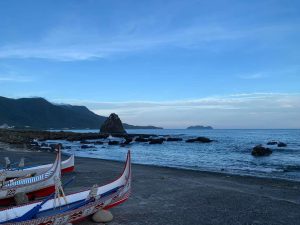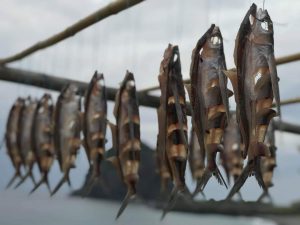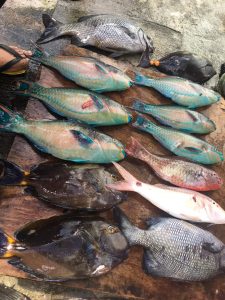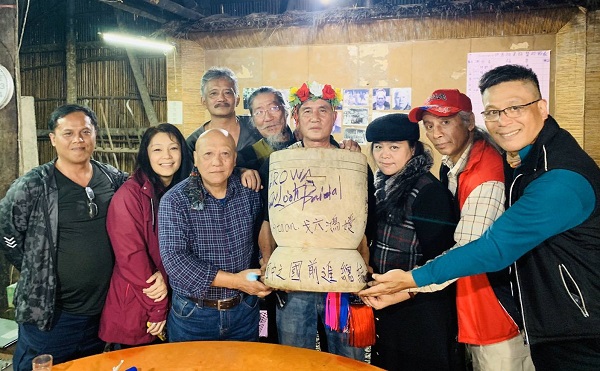First published on 04/23/2020, and last updated on 09/17/2020
By Sutej Hugu, ICCA Consortium Regional Coordinator for East Asia and representative of Indigenous Taiwan Self-Determination Alliance (ITW-SDA), ICCA Consortium Member.
On 2 April, as the number of people tested positive with COVID-19 reached one million, and more than 53 000 people had already died from this disease, the Indigenous Taiwan Self-Determination Alliance (ITW-SDA) organised an online study circle meeting to discuss the global situation of lockdown due to COVID-19.
I. Bait
Just a week before the Chinese New Year of the rat on 25 January 2020, our friend Bukun – an elder of the Bunun people – sent me his poem called “Sinpalkaun” (bait). In the belief system of the Bunun People, a conjunction of the full Moon and Venus may forebode an accident or a disaster. As this seemed to be an omen to alert us on the coming pandemic, I decided to translate the poem into Chinese and English and shared it with some of our friends and colleagues after we heard about the “Wuhan lockdown” on 23 January.
Sinpalkaun

Traditional fishing boats for migratory fishing at Vanoa do Jiratay in the rayon season © Sinan Mavivo (ex CEO of Tao Foundation, ICCA Consortium Member).
Maldidiav a bunbun a sua hatub
Maszang buan tu kikilim mata tu itu bununis labian
Maz a itu aluaz a mata hai
Itu bunun tu isaang
Panduan a havit a mas balikuan mais sitanpu
Maszang mininhalab tu bunun tu pana’aiskuas bunun
Itu havit a nipun a hai
Itu bunun tu isaang
Kantulun a uvaaz mas patishuan kausia madumduman
Kaupas mal’a’ahu tu bunun sahaal mas sinpalkaus hanitu
Maz a sinpalkaun sia hatub a hai
Itu bunun tu isaang
Maldidiul a mata a itu hanitu
Maszang na ispaklang titi tu sapuzis labian
Mapaltuun a buan mas bintuhan mais palkaunan
(Note: The poem is written by Bukun Ismahasan Islituan, in the Isbukun dialect of Bunun language, which belongs to the Austronesian language family and whose native speakers’ number is about ten thousand people).
Bait
Bananas are bright yellow in the trap
Like the Moon seeking for eyes in the dark sky
Eyes of rodent are
Human mind
Butterflies will stay with a coiled viper
Like person of splendid attire attracting peoples
Fangs of viper are
Human mind
Children follow the fireflies into the dark place
Only trappers know the baits of ghost
Baits of trap are
Human mind
Eyes of ghost shed red rays
Like the embers for smoking meats overnight
When the trap is baited, we will see the conjunction of full Moon and Venus
II. Thoughts on human relationship with coronaviruses
What is the human relationship with the coronavirus? What image or understanding do we humans have of these viruses?
- A punishment from God;
- A vengeance of nature;
- A war between humans and viruses;
- An evolutionary adaptation of viruses following the ancient rule.
In the human delusion of conquering and controlling all others, we lose our head in the arrogance of human ego and our heart in the ignorance of human selfishness. Although it is overwhelming for us to experience and observe in person a global scale chaotic catastrophe caused by a natural disturbance between life and death, for ITW-SDA, pandemics are part of natural disturbances, just like typhoons, earthquakes, tsunamis, floods, and landslides. Let us be cautious and held in awe and veneration with solidarity for each other!
III. How can traditional indigenous knowledge help us cope with the pandemic?
1. Following and keeping in pace with the natural cycles and rhythms is fundamental in our Indigenous local living knowledge system
In Pongso no Tao, the island where the Tao people has lived for millennium, there are many examples, from the Tao people’s oral tradition of storytelling, such as the teaching of mavaheng so panid the noble black-wing flying fish (Hirundichthys rondeletii) received by our ancestors. The teaching includes two main parts:
i) The first part reminds us of the inter-species pact for the lasting survival of peoples and fishes. In the Tao marine governance, rayon season (March to June) is for migratory fishing only. Coral reef fishing is absolutely prohibited and flying fish may not be caught from the end of rayon season when they are coming to the peak time of their reproduction. And like this the eco-calendar ahehep no tao defines the arrangement of work and ceremonies all year.

Salted and sun-dried flying fishes in the rayon season © Sinan Mavivo
ii) There is great knowledge about migratory fishing; the equipment and ways to catch each of the different species of flying fish and their predators, and ways of cooking and eating them, for example some species should not be roasted and some should never be cooked together.
Another example can be found in the Isbukun Bunun legend, the story of the two Sun brothers and the Bunun people: Manah mas vali, a Bunun ancestor, had shot and wounded one eye of the older Sun brother in order to reduce the temperature on Earth, and made him to become the Moon. In order achieve the peace, the Bunun people swore an oath to follow the lunar cycle and seasonal calendar in their hunting, gathering and fire-fallow cultivation.
2. Respecting and adapting to natural disturbances and chaotic catastrophes is our traditional multidimensional holistic wisdom
Amongst the Pongso no Tao stories there is the story of mikehnep that has described in detail the coming of a tsunami, the shaman magic that finally made the sea water retreat, and how the traditional knowledge was passed on from the Elders to the grandsons when the people returned to the plain areas, walking the land together to learn the names and associated knowledge about how to rebuild their lives after the flood.
In Isbukun Bunun we can learn from the legend laningavan that tells of the deluge caused by the war between the great snake and giant crab. All the creatures were saved by the sacred mountain Usaviah when it exploded blood to stop the deluge and return the land and forest back to their normal state.
We share the stars, the Moon, the Sun, the lands and oceans of the Earth, and the coronavirus too. May we be taking good care of all ourselves! Voluntary or forced self-isolation is the best time for reflecting and re-thinking everything in our lives.

Typical coral reef fishes harvested around Pongso no Tao © Sinan Mavivo
IV. Post-pandemic perspectives: transform planetary governance and build sustainable livelihoods
Pandemics have come and gone for centuries and millennia. They come, hit hard, and then pass. We marvel at how the world passed through the Spanish flu (also known as the 1918 flu pandemic) one hundred years ago without modern medical care and vaccines?
According to Wikipedia, “the Spanish flu (also known as the 1918 flu pandemic) was an unusually deadly influenza pandemic. Lasting from January 1918 to December 1920, it infected 500 million people—about a quarter of the world’s population at the time. The death toll is estimated to have been anywhere from 17 million to 50 million, and possibly as high as 100 million, making it one of the deadliest pandemics in human history.”
COVID-19 outbreak and lockdown may have a critical impact on the capitalist globalization of supply chains and value chains, and will be a critical stress, load and performance testing for modern medical care and health technology, the (in)capacity of international organizations and instruments, and the (in)effectiveness of state apparatuses despite of the expanding of exceptional government powers and budget in this critical emergency situation around the world.
In this way, COVID-19 lockdown is giving us a good opportunity to experience and observe on a global scale the stop or slowdown of human activities on producing and delivering, purchasing and consuming; in the movement of peoples and all kinds of things. Our visibility of the horizon beyond the urban skyline becomes clear again enabling us to rethink our “modern civilization.”
Let us keep seeking, and striving for how Indigenous local ecological living knowledge, tribal land ethics and governance could contribute to the transformation of planetary governance and sustainable livelihoods before being wiped out by a dominant world system that is itself seriously in crisis.
We propose the ICCA Consortium works jointly on a “Post-COVID-19 conservation framework for territories of life” to complement and go beyond the Post-2020 Global Biodiversity Framework which is going to follow the failed Strategic Plan for Biodiversity 2011-2020.
“No si mavey tao am, meyta…”
(If we are still alive, then let’s go.)
This is an ancient saying of Tao Elders.
Featured image: An ITW-SDA meeting at Karowa tribal community of Tavalong Pangcah people early in February 2020 before the regulation on social distancing. The man with the blue shirt is our poet Elder Bukun © ITW-SDA.
